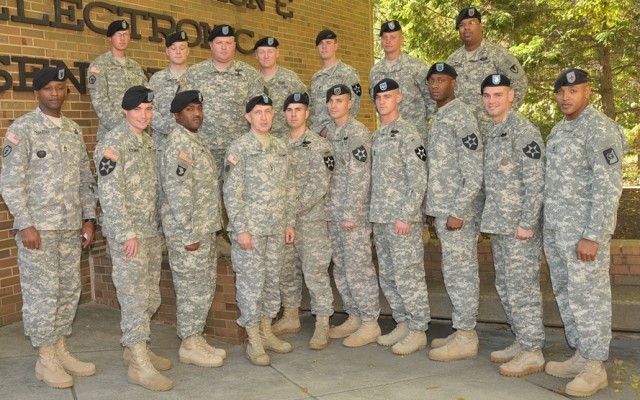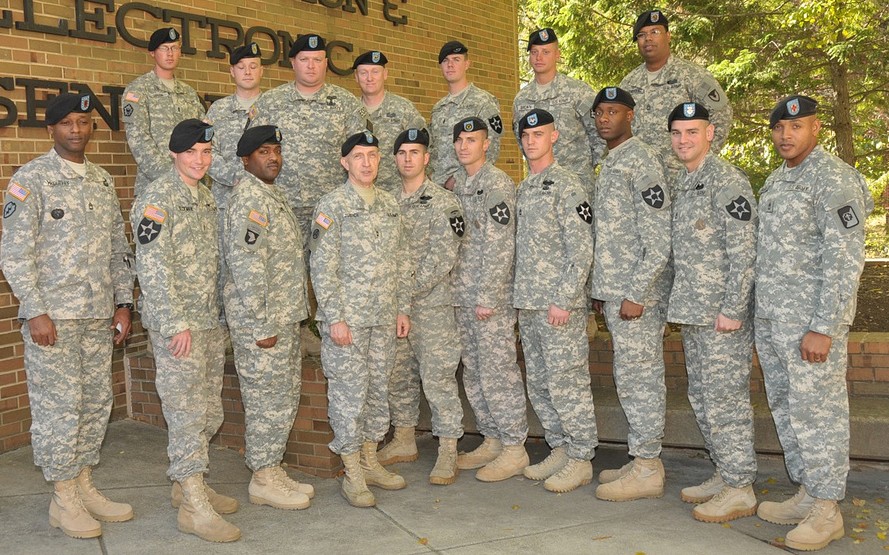
REDSTONE ARSENAL, Ala. -- A group of I Corps Soldiers who returned from tours in Afghanistan in July, recently visited the Aviation and Missile Research, Development and Engineering Center here, their last stop on a two-week tour of U.S. Army Research, Development and Engineering Command facilities.
Their mission was to speak to the scientists and engineers who develop the weapons they use to combat the enemy, giving feedback directly to those who make adjustments and changes to the systems currently being used and those that may be used on future battlefields.
"I took note of the difficulty the Soldiers said they had in firing weapons due to collateral damage concerns," said Mike Turner, electronics engineer at Weapons Development and Integration Directorate, after giving the Soldiers a tour of the GMLRS guidance integration facility.
"They felt that accuracy and reliability were at a premium. With regard to the Guided Multiple Launched Rocket System, they were really impressed with the capability and wondered how they could train with it," Turner said.
The Soldiers were excited about the GMLRS guidance integration facility, saying they felt they had seen something that could be used on the battlefield to help win the fight.
When they arrived in the Advanced Prototyping Engineering and Experimentation II Laboratory, they learned how simulation is being used to help aviators in battlefield environments.
In the Battlefield Highly Immersive Virtual Environment Laboratory, different helicopter cockpits are rolled in and simulations are run with aviators. The simulations vary according to what project managers are looking to attain.
The Soldiers said they felt this would help Army aviators more calmly react in a stressful environment on the battlefield.
At another part of the APEX II Lab tour, work is being done to improve and enhance the Shadow Unmanned Aerial Vehicle. This garnered a lot of attention from the Soldiers.
Staff Sgt. Marcus Pullum, a UAV operator, was especially attentive, asking several questions of Jody Creekmore, lead engineer and lab manager for APEX II.
Creekmore showed the Soldiers the Quick Materiel Express Delivery Systems pod, developed by engineers to get medical and other supplies to Soldiers in the field quickly. The concept is to hook two Quick-MEDS pods under the wings of the Shadow unmanned aircraft system and be ready when needed.
Sgt. 1st Class Erik Knight, infantryman, said it was a great idea for resupply in a situation with an injured Soldier.
"The Soldiers were very interested in what we are doing to add capabilities to the UAV; they seemed pleased by what we are doing to support the war fighter," Creekmore said.
Grant Chandler, mechanical engineer, Platform Integration Function, Weapons Development and Integration Directorate, told the Soldiers about the success of the Kiowa Warrior Reduced Weight Missile Launcher, a composite Hellfire launcher for the Kiowa Warrior helicopter that saves 41 pounds.
Sgt. 1st Class Tony Lamb, an aircraft components repair supervisor, picked up the regular missile launcher then picked up the composite launcher. His reaction was a big smile and, "Whoa! That's light!"
Other Soldiers picked it up, too. The reduced weight, as a result of using composite materials, was a topic of discussion throughout the rest of the tour.
At the end of the day's tour, the Soldiers were talkative as they snacked on cookies and fruit.
Maj. Gen. Jim Rogers, commander of the Aviation and Missile Command, and AMRDEC director Eric Edwards joined them in the conference room to discuss what they had seen and how Team Redstone could help Soldiers on the battlefield. Rogers and Edwards said the Soldiers provided good information about how technology is being used and how it might be improved.
As the I Corps Soldiers left to head back home, they said they had been able to provide information to AMRDEC's engineers and scientists to help develop systems to enable the warfighters of the future.
"The Soldiers talked about how difficult it had been to pack for a two-week tour that took them from Joint Base Lewis-McChord to Detroit, Baltimore and Huntsville, but they mostly talked about the technology they saw and the appreciation they had for the experience and discussions," Merv Brokke, AMRDEC public affairs officer, said.
<p align="center"><a href="http://www.facebook.com/usarmyrdecom"><img src="http://farm5.static.flickr.com/4055/4427141402_3d3fef5a9a_o.jpg" alt="Fan us on Facebook!" border="0" hspace="2" width="25" height="25" /></a><a href="http://twitter.com/rdecom"><img src="http://farm3.static.flickr.com/2790/4426378671_8dd5a3dd82_o.jpg" alt="Follow us on Twitter!" border="0" hspace="2" width="25" height="25" /></a><a href="http://www.flickr.com/rdecom"><img src="http://farm5.static.flickr.com/4049/4427141382_2e32440518_o.jpg" alt="Contact us on Flickr!" border="0" hspace="2" width="25" height="25" /></a><a href="http://www.youtube.com/rdecom"><img src="http://farm5.static.flickr.com/4006/4426378659_8f234568f8_o.jpg" alt="Subscribe on YouTube!" border="0" hspace="2" width="25" height="25" /></a><a href="http://www.ireport.com/people/rdecom"><img src="http://farm5.static.flickr.com/4006/4426378639_88e42e9c6e_o.jpg" alt="We're on CNN iReport!" border="0" hspace="2" width="25" height="25" /></a><a href="http://www.linkedin.com/groups'gid=1978373"><img src="http://farm5.static.flickr.com/4051/4426378645_6de729478d_o.jpg" alt="Linkedin discussions!" border="0" hspace="2" width="25" height="25" /></a></p>

Social Sharing